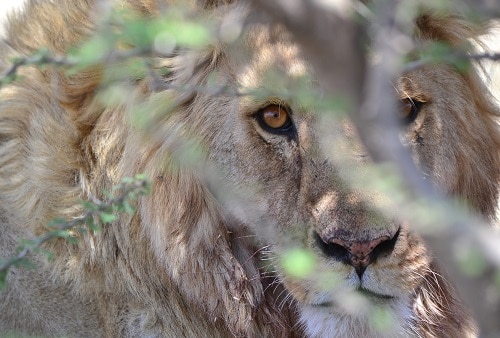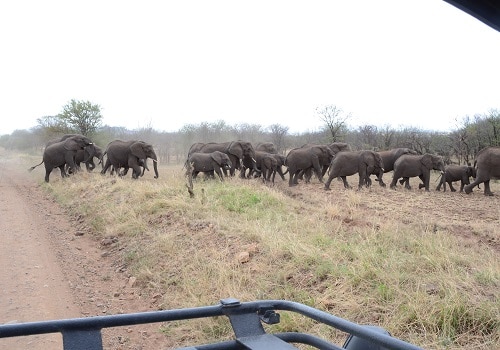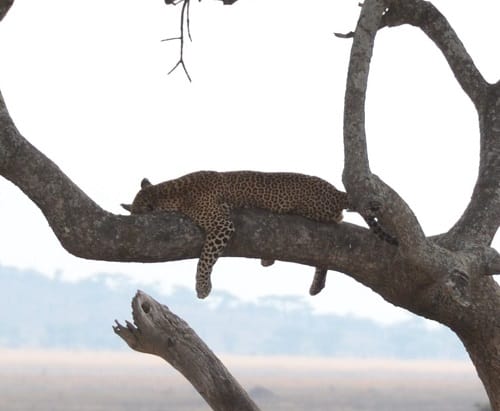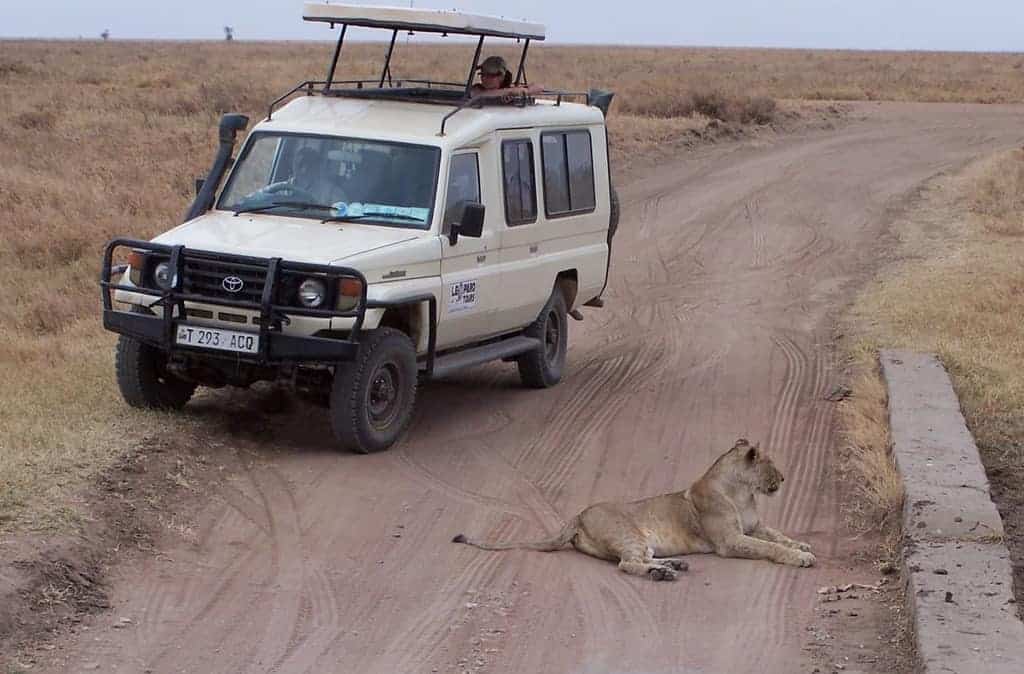How To Plan a Safari
Are you dreaming of an African safari trip, or maybe you already have one planned? Here are 20 tips to help you plan your trip and manage expectations. While many of these tips will be helpful for any African safari trip, they are primarily focused on Tanzania and Kenya.
Select a Quality Tour Operator
Experienced guides with knowledge of the terrain and an understanding of the animals’ movements will maximize your safari adventure by increasing your wildlife encounters. Here are some of the most highly rated safari tour operators you might consider booking with.
Cost
There are many tour operators to choose from at a wide range of price points. The type of safari you choose, the time of year, and duration will factor into the cost. Mid-range and luxury safaris average around $350-$750 per person per day. Many ultra-luxury options are available where the accommodations alone may cost $1,500-$2,500 per night. When comparing prices ensure to review all inclusions, such as whether the lodging, guides, transportation, meals, and park fees are included. Entrance fees for adults at many parks range from ~$50-$80 per person per day.

When to Safari
Wildlife viewings are always plentiful, but seasons and wildlife patterns vary throughout the year and may be different depending on which country or countries you plan to visit. For example, June and July are generally your best months to witness the wildebeest migration in the Serengeti National Park. The wildebeest calving season, where an estimated 8,000 calves are born each day, typically occurs around February in the Serengeti. The migratory animals generally cross the crocodile and hippopotamus infested waters of the Mara River in Kenya around August through September.
Safari Resorts
Communicate with your tour operator ahead of time so you know what to expect at your resorts. Many safari resorts are located in the national parks virtually in the middle of nowhere. All of the resorts we stayed at were luxurious and uniquely designed and decorated. Many of our rooms were in individual cottages, huts, “tents”, or other separated structures. While our safari resorts were all very different, we experienced many commonalities. We were always welcomed with the warmest hospitality and graciously catered to and spoiled beyond measure. We were often greeted with smiling faces offering us freshly squeezed cold juice and a damp towel to clean off the dust.
Beds: Our beds were protected by a netting enclosure to help keep the creepy critters away. Underneath our sheets, as we crawled into bed were hot water jugs keeping the bed warm and toasty during the night. The heat was very calming and relaxing after a long day of safaris.
Hot Water: Hot water is not always consistent and may be rare in budget hotels. All of the lodges we stayed at had at least some hot water. At one of our lodges, we were given a card that outlined the limited time slots during the day when hot water was available. The lodge we stayed at before hiking Mount Kilimanjaro only had hot water available for about 5 minutes at a time.
Armed Escort: When returning to your room after dinner, expect to be accompanied by an armed escort to keep guard of lurking buffalo or other wildlife.
Overeating: Most of the lodges served full 3-course meals 3 times per day. The African-inspired meals were plentiful, varied, and delicious. While we had picnic lunches while we were on game drives, any time we returned to a lodge for lunch, a gourmet feast was waiting for us. Bush dining was offered at many of the resorts and is an experience you should try at least once during your safari vacation.
Resort Style Pools are offered at many of the lodges.
Common Swahili Words and Phrases
We always try to learn at least a few everyday basic phrases and greetings whenever traveling to a foreign country. While both Swahili and English are widely spoken in Tanzania and Kenya, knowing even a few words in Swahili is often well-received.
Swahili is one of my favorite languages. The words sound fun and put me in a good mood listening to them. I don’t think it’s possible to say “Jambo!” meaning “Hello” without smiling at least a little. Here are a few other basic phrases to get you started:
Asante sana – Thank you very much
Karibu – You’re Welcome
Choo – Toilet
Kwaheri – Goodbye
If you’re a 90’s kid, or otherwise loved The Lion King movie, you already know a little bit of Swahili. Hakuna matata translates to mean “no problem” or “no trouble,” and was a phrase we heard and used frequently. Other Swahili words from the popular animated movie include: Simba meaning lion, Rafiki meaning friend, and Pumbaa translating to foolish.
What to Wear
What to wear on a safari has little to do with fashion, although you can be as stylish as you like. You want to avoid wearing colors or patterns that may scare or confuse the wildlife or possibly get you into trouble with law enforcement.
Color Dos and Do Nots: Lighter, neutral-colored clothing with breathable quick-dry fabrics are your best options. Earth tone colors such as khaki, tans, browns, and olive green are excellent options because they blend in with the landscape. Bright colors are believed to scare animals and make them hide, which would defeat the purpose of going on a safari. We were informed tribal men often wear bright red as they believe it will scare the predatory animals from preying on their cattle. Your color options are more important if you’re doing a walking tour than during a game drive, but it’s always a good idea to give yourself the best chance to see wildlife.
Black and dark blue should be avoided as blood-sucking tsetse flies tend to be attracted to these colors. White may turn tan or khaki by the end of the day and may startle wildlife as it is reflective. Don’t wear animal printed clothing, which is prohibited at some zoos, as it can confuse animals. Wearing a pith hat/helmet may be offensive as symbolic of colonial rule. Wearing camouflage may cause unwanted questioning (or worse) by police and is illegal in some countries for anyone other than official military personnel to wear.
Quick-drying fabric is important as driers may be hard to come by. To avoid purchasing single-use clothing, I bought long-sleeve button-down shirts that were breathable and fast drying that were ideal for hiking, fishing, and hot boating days and then wore a tank top underneath. I also purchased quick-drying pants that converted into shorts, although I often preferred staying in long pants because of the dust and bugs.
Shoes: Close-toed shoes protect you from pesky critters. If you’re doing a walking safari, you’ll want sturdy well-broken-in hiking shoes.
Accessories: Wide-brimmed hats and sunglasses are important to help protect your face and eyes from the harsh sunlight. Bandanas, scarves, or something similar come in handy to help prevent dust from getting in your mouth and nose. Some even bring surgical masks.
Pack Light
If your safari trip takes you on smaller single-engine charter planes, packing light may be necessary. You should confirm weight and size limitations with the airline company. The small planes we flew on during our first trip to East Africa had a luggage weight limit of not more than 33 pounds, including any carry-on luggage and purses. There was also a size limitation not to exceed ~14.5 by 27 inches as larger bags cannot fit through the cargo door. If you absolutely must travel with additional luggage, purchasing a premium class seat or an extra seat may be an option.

The Excitement of the First Wildlife Encounter
Seeing your first animals in the wild typically ignites excitement. While we had been told stories of how many animals we would see and how close they would get, it’s hard to appreciate the amount and closeness until witnessing it firsthand. Our first two sightings were an elephant and then a buffalo. Both were over 20 feet away and partially hidden by trees. We stood up through the roof of our safari vehicle frantically snapping pictures and staring in awe. Our guide encouraged us to continue onwards with the promise those were only the beginning. By the next day, we would not have looked twice at most animals that far away, unless it was one of the big cats or a rhino.

Animal Spotting
While bountiful wildlife is nearly guaranteed to greet you throughout your wilderness journey, you may not see every type of animal. The longer your safari holiday, the better your chances. Different parks are home to different animals. The most frequently sought after animals include the “Big Five,” which refers to the lion, leopard, rhinoceros, elephant, and buffalo.
Elephants, giraffes, zebras, wildebeests, buffalos, hippos, hyenas, baboons, gazelles, impalas, topis, and even lions (since they are often seen in prides) are generally easy to find and often can be seen in extremely close proximity to your vehicle. Cheetahs are commonly seen solo or in pairs. Leopards and then rhinoceroses may be the most difficult to spot.
The anticipation is high each day since you never know what surprises await you on a safari. Be on the lookout for wildlife throughout your safari experience. While the guides are excellent at spotting them, the more eyes searching only increase your chances of seeing highly sought after wildlife. Remember to talk in soft voices to avoid scaring the animals away.
Seeing a Kill is Rare
Manage your expectations. Being in the right place at the perfect time to witness the predatory cat stalk and kill its prey isn’t a common occurrence on a safari. It is, however, exciting to sit there in anticipation and maybe witness a chase.
Best Viewing Time of Day
Viewing wildlife is typically better earlier in the morning and later in the day. It is common to return to the lodge to eat lunch since many animals rest midday. Most of the lions and cheetahs we encountered during our safaris were lounging underneath the shade of a tree mid-afternoon.

Bumpy and Dusty Roads
Driving is on the left side of the road in Tanzania and Kenya. Many roads are bumpy and dusty, especially within the parks where the roads are unpaved. Potholes and animal crossings are common. Make sure your mouth, nose, and eyes are covered and close your windows as you are passing or being passed by another vehicle as this often causes you to be engulfed in a cloud of dust.
Keep Car Windows Closed When Leaving Your Vehicle
Remember to close your car windows when departing your vehicle. Monkeys or other wildlife may let themselves in if you forget and destroy the vehicle. We saw this happen at a picnic stop when a family left their vehicle to use the restroom and left their windows open. Keep your hotel room doors and windows closed, as well.
Bugs
Biting tsetse flies, mosquitoes, and other bugs are sure to tag along on your safari at least some of the time. Some of the bugs bite right through your clothes. Covering up and wearing insect repellent, especially in the evenings, will help. There’s even bug repellent sprays you can apply directly to your clothing. The bugs were only bothersome to me during a couple of days.
Public Bathrooms
Whenever a public bathroom is available, use it. The bathrooms are few and far between but were generally available by park entrances and designated picnic areas. The restrooms in the parks in Tanzania and Kenya typically had the option of at least one regular Western toilet along with squat toilets in the other stall(s), which are essentially little more than a hole in the ground.
Bring your own tissues/toilet paper and hand sanitizer (or other liquid soap) and keep them with you as many bathrooms were lacking in one or both. Our guides always had excess toilet paper and hand sanitizer, but I always prefer being prepared with my own supply.
Safety While on Safari
While safaris are generally very safe, it’s important to respect the wildlife and follow your guide’s instructions to maintain safety. Always stay in the vehicle during your safaris, unless you are at a designated area tourists are allowed to walk around.
When you are walking around, be mindful of where you step. If searching for an outdoor bathroom spot, ask your guide’s advice and don’t venture too far. Venomous snakes and scorpions may be in the bush. The big cats camouflage in the surroundings and may be closer than you realize. Buffalos, while herbivores, are extremely aggressive and dangerous toward humans.
If you need to walk around at night while at your lodge (such as to and from dinner), make sure a guard escorts you. There are generally no fences and wildlife can be anywhere. It was not unusual to see lions lounging or buffalos wandering very close to our lodges.
Keep your distance from hippos. While hippos appear very calm, they can be very aggressive, territorial, and are the most deadly large animal to humans in Africa. We watched enormous crocodiles shy away from approaching hippos defining their territory.
Upgrade Your Camera
This is a trip worth investing in a better camera or renting one. Having fast autofocus and a longer lens will help you obtain great photos of moving wildlife and/or wildlife that is a little farther away. My only regret from my first safari trip was not having upgraded our camera. After upgrading to a 200mm lens on my second safari trip, we wished we had a longer lens, such as 600mm.
Having a small tripod or a beanbag is helpful when taking pictures from the safari jeeps. A bigger tripod was impractical except at the lodges. Bring extra batteries and camera cards with you while out on safari.
Visas and Vaccinations
Check the websites for the Embassies of Tanzania and Embassy of the Republic of Kenya and their visa websites for the most current information, vaccination requirements, as well as any travel restrictions.
The CDC has a list of recommended vaccinations in Tanzania and Kenya. I recommend a visit with your local travel clinic in advance of your trip. At least one of the recommended vaccinations we needed required a series of applications. We needed to take the malaria pills at least a couple of days before our trip started and needed to continue taking them after we returned home.
Food and Drinking Information
Review the CDC’s eating and drinking safety recommendations to reduce the likelihood of travelers’ diarrhea and other diseases. For Tanzania and Kenya, the CDC recommends not drinking tap water, ice made with tap water, or eating undercooked fish, meat, or eggs, and raw or unpeeled fruits and vegetables that haven’t been washed in clean water.
Remember that not drinking the tap water includes not even using the water to brush your teeth. Most, if not all, the hotels we stayed at kept bottled waters by the sink in the bathroom, which served as a helpful visual reminder not to use the tap water. I’d recommend doing this even if your hotel does not as turning the sink on to rinse your toothbrush can be second nature.
Plastic Bag Ban
Check the status of whether and to what extent plastic bags are prohibited before traveling, as more and more countries, such as Tanzania, Kenya, and Rwanda, have plastic bag bans.
